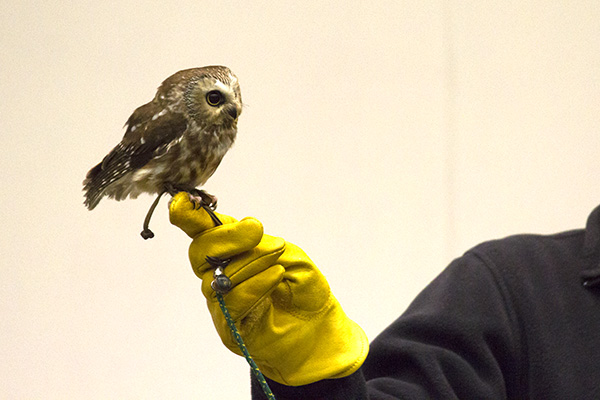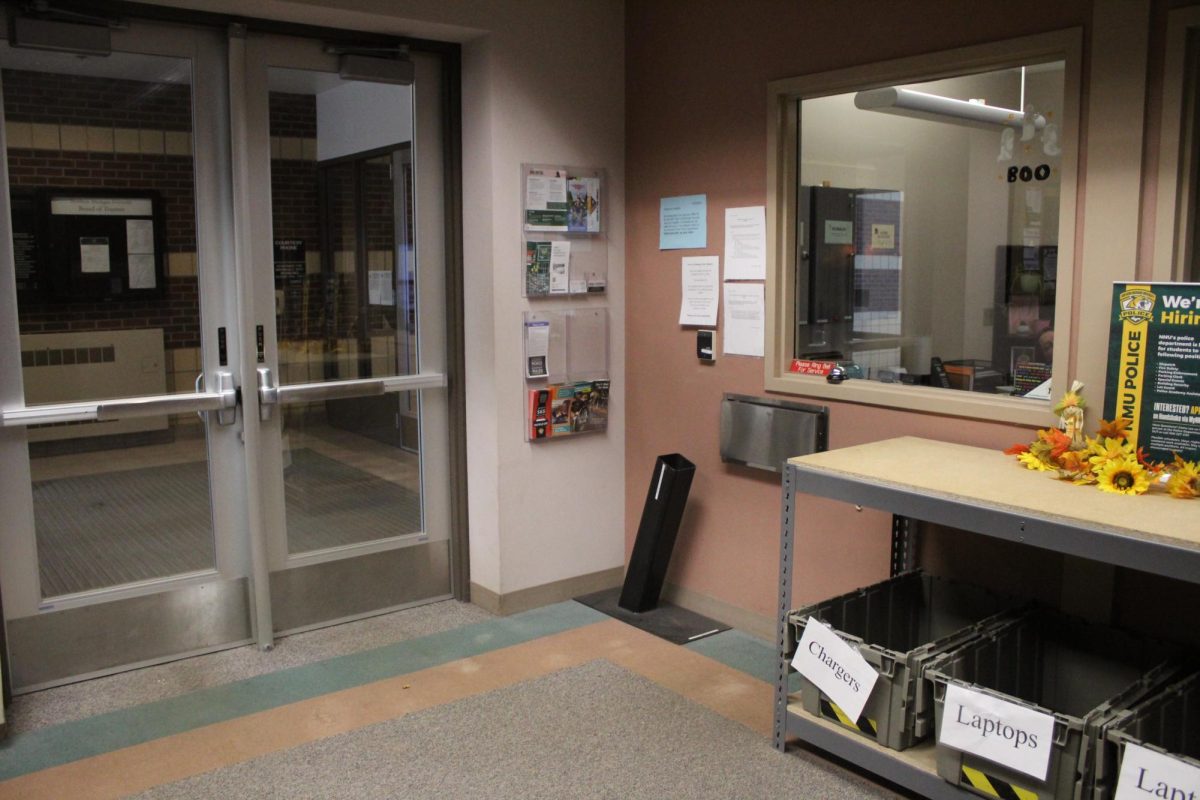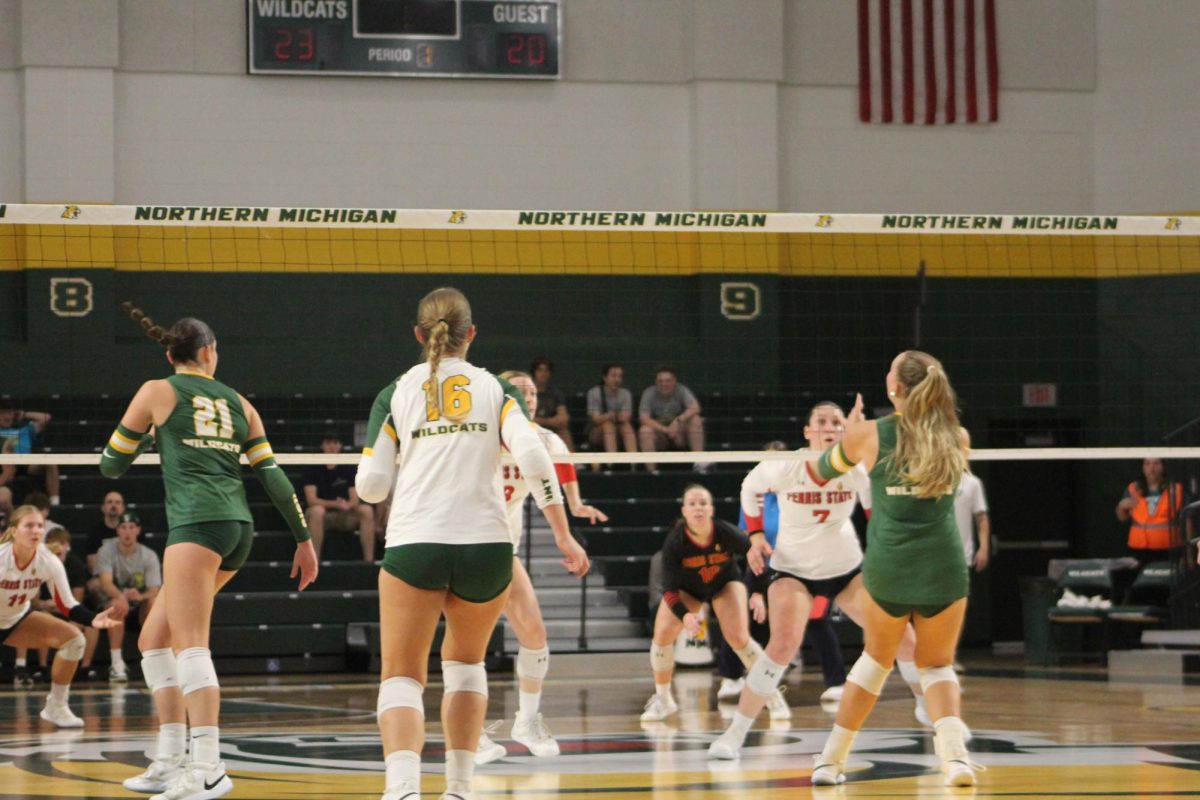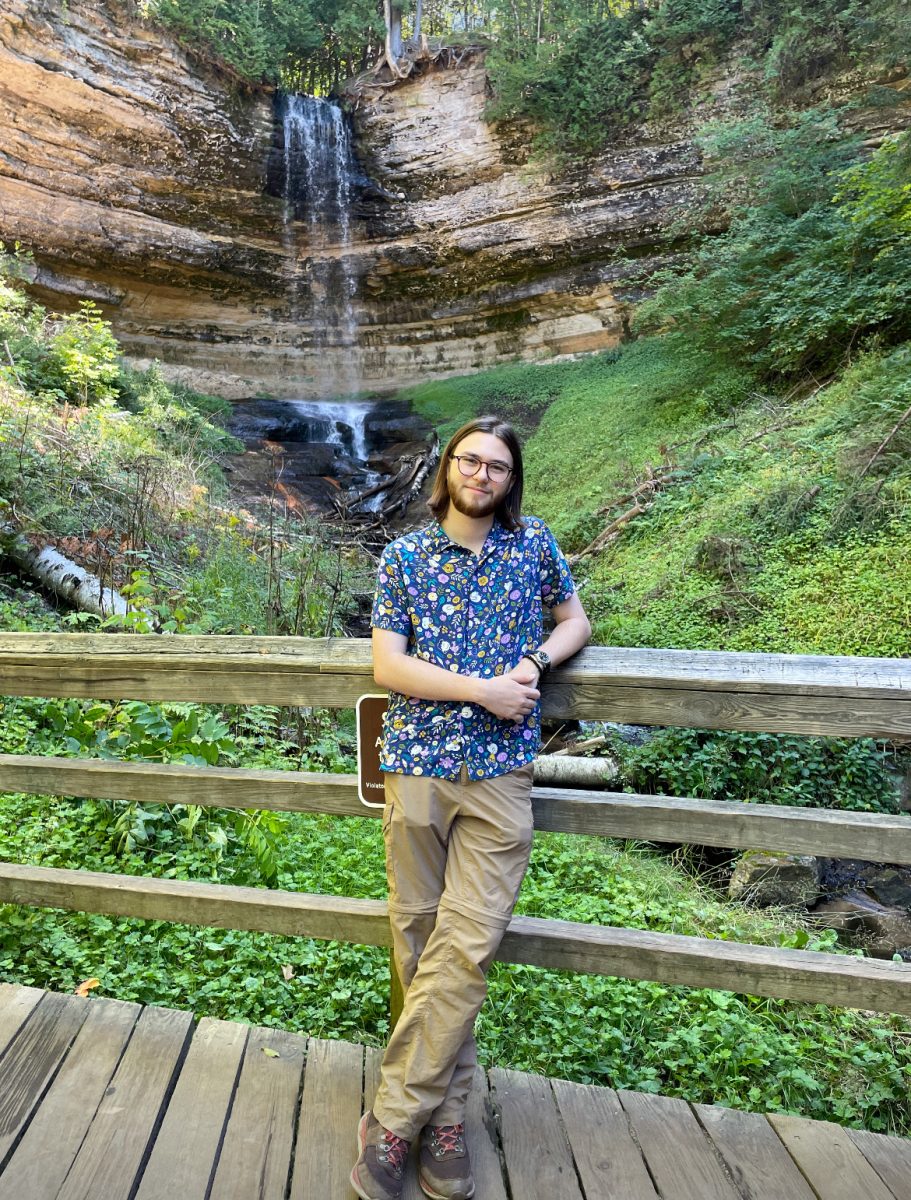A mere 4 ounces comprised the tiny owl sitting in front of a crowd of over 50 people. The owl, although miniature, is fully grown. His large eyes, which account for most of the surface area of his face, dart back and forth, skeptical of the crowd and the multiple cameras in front of him.
Cecile, a male northern Saw-Whet owl flapped his wings in protest to the large audience peering at him. A leash attached to his leg kept him from flying off his perch, which was the finger of Bart Kotarba, the director of education at Northwoods Wildlife Center in Minocqua, Wis.
Kotarba, along with employees from the Chocolay Raptor Center in Marquette, Michigan, showcased animals, including a sood turtle, a Saw-Whet owl, and American kestrel falcon to members of the Marquette community on April 9 in the West Science building.
Northern Michigan University’s Wildlife Society brought these animal enthusiasts together for the fourth annual Birds of Prey event.
Northwoods Wildlife Center, established in 1979, is a non-profit organization dedicated to caring for and rehabilitating injured and orphaned animals. Cecile, the tiny owl, is unable to be put back into the wild because of an injured eye; he will instead live out his life under the care of the center.
Another animal showcased in the event was TJ, an 8-year-old female American Kestrel, the most common falcon found in North America. Her petite frame, weighing only 5 ounces, was perched on Kotarba’s finger. Another lifetime habitant of the Wildlife Center because of an injury, TJ was comfortable around the audience, bobbing her head up and down, flicking her tail and peering at the crowd oohing and aahing back at her. Kotarba assured the audience her movements were signs of relaxation, not nervousness.
Bird feathers, skulls, turtle shells and five turtle eggs floating in a glass jar were passed through the crowd. The show was interactive, and people were encouraged to sit close.
Kotarba, animated with a child-like excitement, mimicked the unique calls of different owls and illustrated the motions of a turtle climbing over a log using his claws.
He spoke on the importance of respecting wildlife, obviously passionate about his job. Let wild animals be wild, and leave injured animals alone or call the experts because animals are dangerous, especially when injured or sick, Kotarba said.
“It is important to teach people to appreciate wildlife,” he said.
Animals who are brought into the care of humans must only stay for a little while or never go back out to the wild, Kotarba said.
If domesticated, the animals are no longer able to live on their own in the wild.
He stressed the importance of not taking in wild turtles as pets unless they are committed to care for the animals for at least 60 years. Additionally, pets should never be released into the wild.
Not only will they not be able to survive, Kotarba said, but they also might also spread disease into the wild.
“The challenge with wildlife rehab is that we want to cuddle the babies, but they have to stay wild.”
The event has been really well received in the past, and in its fourth year, turnout has been growing, said Zach Dykema, junior biology major.
“[The Wildlife Society] just really likes being actively involved in the community and education and wants to reach out to families,” Dykema said, “and of course we like to have kids come out here and see some cool birds of prey.”






















